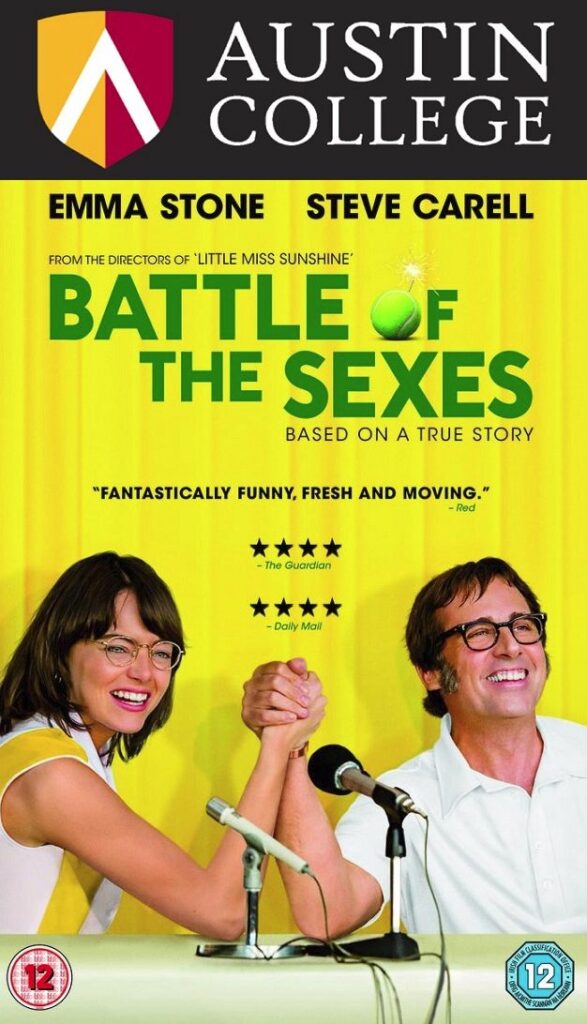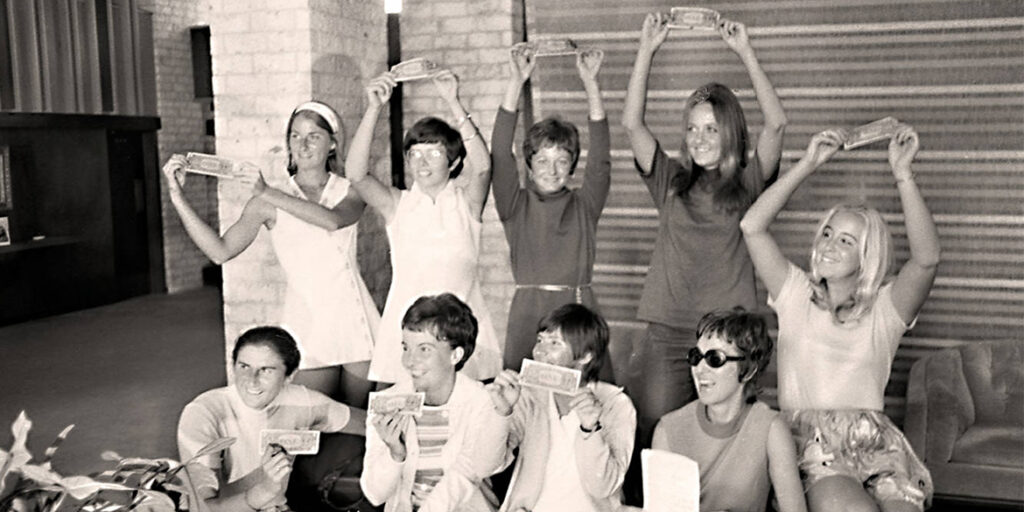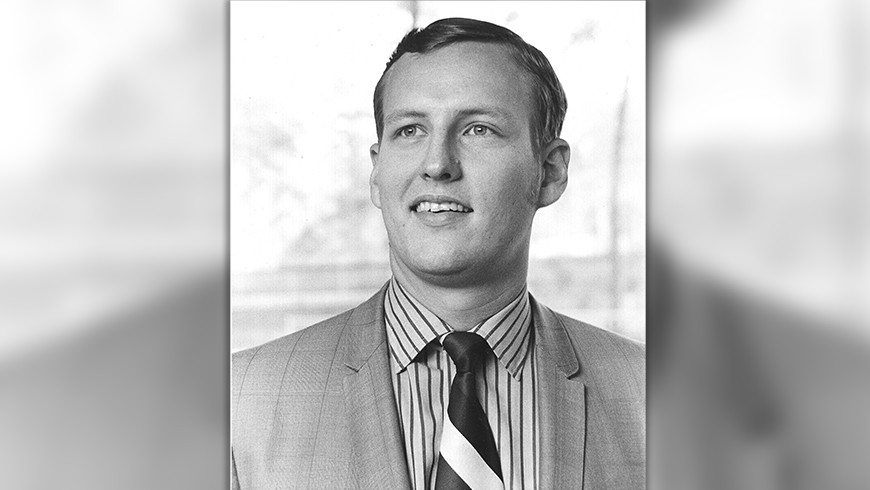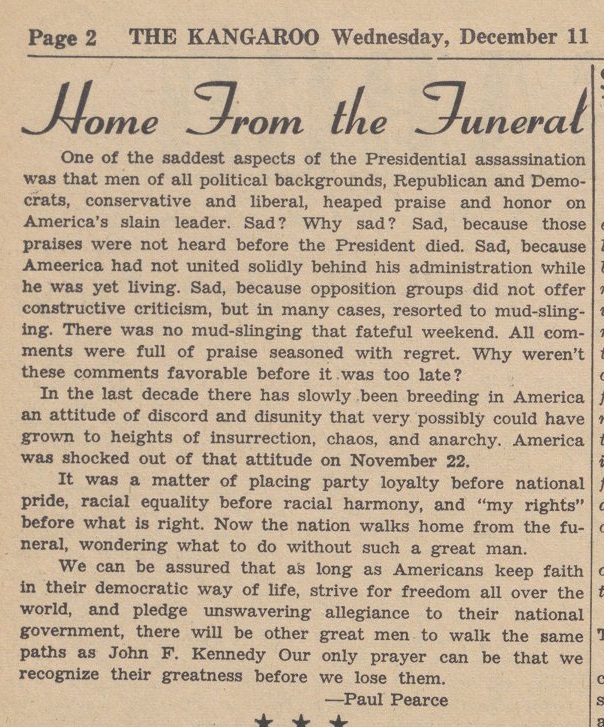
Billie Jean King was mad as hell, and ready to take on the patriarchy of male-dominated professional tennis. Margaret Court, then the #1 female player in the world, elected to not be in Billie Jean’s court. But guess who was on the side of this women’s tennis icon? An Austin College Kangaroo.
Paul Pearce graduated from Austin College in 1965. In Sherman, he pledged Phi Sigma Alpha, contributed to the Roo newspaper, and played tennis. After AC, Paul Pearce left for Houston to “grow the game.” An opportunity arrived when he was elected Executive Director of the Houston Tennis Association (HTA) in the late 1960s. The timing could not have been better.
The Open (professional) era of tennis arrived in 1968, and prize money soon skyrocketed. But only for the men. Despite significant ticket sales, the male-run United States Tennis Association (USTA) refused to budge on meager prize money for women and began dropping women’s tournaments entirely. By 1970, male championship earnings exceeded women by a factor of 10:1 at the U.S. Open. There was nothing the girls could do short of establishing their own tennis league.
And with the help of Roo Paul Pearce, that’s exactly what they did.
The events that shook the game of tennis are documented in the 2017 movie “Battle of the Sexes.” Billie Jean King, the ringleader of the “Original 9” women tennis players who walked out on the USTA, is played by Emma Stone. Gladys Heldman, the influential publisher who managed the “Original 9,” is played by Sarah Silverman. Margaret Court, who took a pass on becoming a part of this renegade group, is played by Australian actress Jessica McNamee. While it took courage to walk away from the men’s game, King & Heldman needed more. They needed tournaments, ticket sales, sponsors, and prize money to rival USTA purses. And that’s where HTA Director Paul Pearce comes in.
Pearce: “I was sitting in my office one day. Phone rang, and it was Gladys Heldman. She asked, ‘Paul, do you think you can raise $5,000 for a women’s tennis tournament?’ The question really hit me hard, to be quite frank, because the answer, I felt, was probably no. I told her, though, I was really excited. This is my job in Houston to promote tennis and what better way to do it than this? I said, ‘Gladys, I don’t know if I can, but I’ll sure try.’”
Pearce was able to raise just over $2,000 locally (~$15,000 in 2022 dollars), roughly half of the goal. The other half was raised by Heldman through her contact with Virginia Slims. And just like that, the Virginia Slims women’s tennis tour was born. The Original 9 had their prize money. Now they just needed a tournament to kick things off. Pearce had another idea: a tournament at the Houston Racquet Club in his new hometown after Sherman.
Pearce: “The Houston Racquet Club was applying for a sanction from the USTA and we sent in our application and check. Apparently at the USTA they were having fits and starts when they saw our application and found out what was happening. All hell must have broken loose. They were losing their grip on the women.”
King, Heldman, and the Original 9 gathered at the Houston Racquet Club (HRC) in September 1970 to participate in the first ever tournament of the soon-to-be-renamed Women’s Tennis Association (WTA), today arguably the most successful sports organization for women in the world. At the HRC, the women signed symbolic $1 WTA contracts on $1 bills for the press. The $1 bill signing scene is part of the movie “Battle of the Sexes.” Paul Pearce was there alongside Heldman and King to handle public relations.
Pearce: “I had a photographer there, a freelance guy that I’d used. The girls were actually looking at him and his photo went nowhere. And the AP photographer gets a shot of them from the side. You kind of look at that picture and you wonder, ‘What are they looking at?’ Are they looking at the future, and this possibility of making all this money? They were just looking at the wrong photographer.”
By 1973, the WTA had achieved equal winnings for the male & female champions of the U.S. Open. That equity has been in place ever since. 1973 was also the year of the famous “Battle of the Sexes” tennis match between King & former U.S. Open champion Bobby Riggs (played by Steve Carrell in “Battle of the Sexes”). Riggs had defeated Margaret Court earlier that year in a match coined as the “Mother’s Day Massacre.” But in front of tens of thousands at the Astrodome and a global television audience of 90 million, King defeated Riggs 6-4, 6-3, 6-3. The King-Riggs Astrodome match is the climactic scene in the movie.
The Houston Chronicle’s review of the movie was positive, but did offer one criticism:
“[Our] lone quibble with “Battle of the Sexes” has to do with some erroneous chronology and geography. It is understandable for keeping the story line tight – again, this is a love story and not a tennis documentary – but irritating nonetheless because Houston gets shortchanged. Far more important in the grand scheme of things than the Riggs-King result, which clearly did nothing to eradicate sexism, was what had happened at the Houston Racquet Club almost three years earlier, on Sept. 23, 1970, when nine players, King the most prominent among them, accepted symbolic dollar bills that turned them into professionals and launched a tennis tour completely independent of the fledgling men’s circuit.”
In 2014, Paul Pearce was interviewed for a book about his role in establishing the first association dedicated to women’s professional tennis. Pearce was also a participant in a 2020 virtual reunion with King, Heldman, and the “Original 9” on the 50th anniversary of the tournament in 1970. According to the Austin College Magazine (h/t Vickie Victoria Kirby), that tournament “began a revolution that resulted in higher compensation for women in all sports – and perhaps expanded women’s rights beyond the sports world.”
These Roo Tales are just plain fun for me. Why? Because the “Roo Research” means I’m always learning, even where I am already knowledgeable. I am a former Top 100 junior tennis player in the state of Texas. I frequently played at the Houston Racquet Club in the 1980s. More than that, I competed against Thomas Cook, who has been the head tennis pro at Houston Racquet Club for 25 years.
My mother Linda Parrish, who drove me throughout Houston during those tennis playing days, was in London in 1973 to watch Billie Jean King win Wimbledon; she also ensured I was knowledgeable about King’s victory over Riggs in Houston that same year. And yet, in spite of all of this tennis background, until this Roo Tale I was still unfamiliar with the pivotal role played by this tournament at the Houston Racquet Club and Billie Jean King’s collaboration with Roo Paul Pearce. Yes indeed, there truly is an Austin College graduate truly lurking everywhere.
Serena Williams, the best women’s player in tennis history, had this to say about Billie Jean King after her 2019 Australian Open victory:
“All of women’s tennis, and really all of women’s sport owe everything to Billie Jean King. Everything that she’s done for us. Demanding equal prize money & equal play really makes me want to focus on what I do off the court. What can I do to help these young players coming up [and] how we can really continue Billie Jean’s legend. Just to get to know her on a personal level has been inspiring.”
Amen, Serena. But Billie Jean King, an American sports icon who believed in equity and inclusion, would insist that everyone linked to the Original 9 at the Houston Racquet Club in 1970 be given a tip of that hat. That list would not include Margaret Court, who took a pass on the Original 9 and has continued to be on the wrong side of history in the 50 years since. But that group amazingly does include Mr. Paul Pearce, a Phi Sig Kangaroo from little Austin College.
https://www.usta.com/en/home/stay-current/texas/original_9_2021.html
https://www.youtube.com/watch?v=smKFS-2OS4Q



